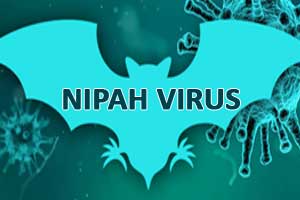- Home
- Medical news & Guidelines
- Anesthesiology
- Cardiology and CTVS
- Critical Care
- Dentistry
- Dermatology
- Diabetes and Endocrinology
- ENT
- Gastroenterology
- Medicine
- Nephrology
- Neurology
- Obstretics-Gynaecology
- Oncology
- Ophthalmology
- Orthopaedics
- Pediatrics-Neonatology
- Psychiatry
- Pulmonology
- Radiology
- Surgery
- Urology
- Laboratory Medicine
- Diet
- Nursing
- Paramedical
- Physiotherapy
- Health news
- Fact Check
- Bone Health Fact Check
- Brain Health Fact Check
- Cancer Related Fact Check
- Child Care Fact Check
- Dental and oral health fact check
- Diabetes and metabolic health fact check
- Diet and Nutrition Fact Check
- Eye and ENT Care Fact Check
- Fitness fact check
- Gut health fact check
- Heart health fact check
- Kidney health fact check
- Medical education fact check
- Men's health fact check
- Respiratory fact check
- Skin and hair care fact check
- Vaccine and Immunization fact check
- Women's health fact check
- AYUSH
- State News
- Andaman and Nicobar Islands
- Andhra Pradesh
- Arunachal Pradesh
- Assam
- Bihar
- Chandigarh
- Chattisgarh
- Dadra and Nagar Haveli
- Daman and Diu
- Delhi
- Goa
- Gujarat
- Haryana
- Himachal Pradesh
- Jammu & Kashmir
- Jharkhand
- Karnataka
- Kerala
- Ladakh
- Lakshadweep
- Madhya Pradesh
- Maharashtra
- Manipur
- Meghalaya
- Mizoram
- Nagaland
- Odisha
- Puducherry
- Punjab
- Rajasthan
- Sikkim
- Tamil Nadu
- Telangana
- Tripura
- Uttar Pradesh
- Uttrakhand
- West Bengal
- Medical Education
- Industry
Nipah Virus resurfaces in Kerala

Thiruvananthapuram: Nipah Virus (NiV) which had claimed the lives of 17 patients last year has resurfaced in Kerala.
The information of the same comes from a recent report by PTI which mentions that a 23-year-old patient who is currently admitted to a private hospital in Kochi, is suspected to have been infected with the Nipah virus. However, the final confirmation is awaited from the National Institute of Virology in Pune, informed sources from the Kerala government.
Medical Dialogues had extensively reported about the Nipah outbreak in Kozhikode last year. The Indian Council of Medical Research has confirmed that fruit bats were the primary source of the Nipah outbreak in Kerala’s Kozhikode and Malappuram districts, where 17 people died due to the virus.
Read Also: Fruit bats- source of Nipah outbreak in 2 Kerala districts, confirms ICMR
The Union Health Ministry issued an advisory for general public and healthcare personnel mentioning the preventive measures they should adopt in high-risk areas, along with information on how the disease spreads and what are the symptoms.
Read Also: Health Ministry Issues Advisory on NIPAH Virus, Check out Details
Now, on the current suspected case of Nipah; Health Minister K K Shailaja said all precautions have been taken and isolation wards set up at the Kalamassery Medical College Hospital in Kochi. Government, private and peripheral hospitals have been asked to be cautious.
What is Nipah Virus?
Nipah virus (NiV) infection is a newly emerging zoonosis that causes severe disease in both animals and humans. The natural host of the virus are fruit bats of the Pteropodidae Family, Pteropus genus. Here are a few facts about the virus
- The natural host of this virus is believed to be fruit bats of the Pteropus species, four of which have been demonstrated to have serologic evidence of infection with this virus. The virus has also been isolated from fetal tissue and uterine fluids of these bats.
- Nipah and Hendra viruses are two related zoonotic pathogens that have emerged in the Asia-Pacific region. Both are RNA viruses that belong to the Paramyxoviridae family.
- The viruses jump the species barrier and infect a secondary animal host (eg, pigs or horses), and transmit infections to humans. In addition, the Nipah virus may be able to spread from human to human.
- Nipah virus primarily causes an encephalitic syndrome with a high mortality rate. The characteristic MRI abnormalities are multiple, small (less than 5 mm), asymmetric focal lesions in the subcortical and deep white matter without surrounding edema.
- The incubation period ranges from 7 to 40 days. The initial presentation is non-specific, characterized by the sudden onset of fever, headache, myalgia, nausea and vomiting.Meningismus is seen in approximately one-third of patients although marked nuchal rigidity and photophobia are uncommon. Patients infected with Hendra virus have presented with fever and influenza-like illnesses, or with meningoencephalitis.
- The diagnosis of Nipah virus can be established using an Enzyme-Linked Immunoassay (ELISA). Supportive care is the mainstay of treatment and infected patients may requireintensive care monitoring.
Garima joined Medical Dialogues in 2017 and currently works as the Senior Editor. She oversees coverage of all healthcare topics, with a focus on medico-legal cases, regulatory updates, decisions by NMC, DCI and medical councils, developments in medical education, government policies, and news on medical and dental colleges. She holds a Master’s degree in Journalism and Mass Communication and can be contacted at editorial@medicaldialogues.in | 011-43720751.


